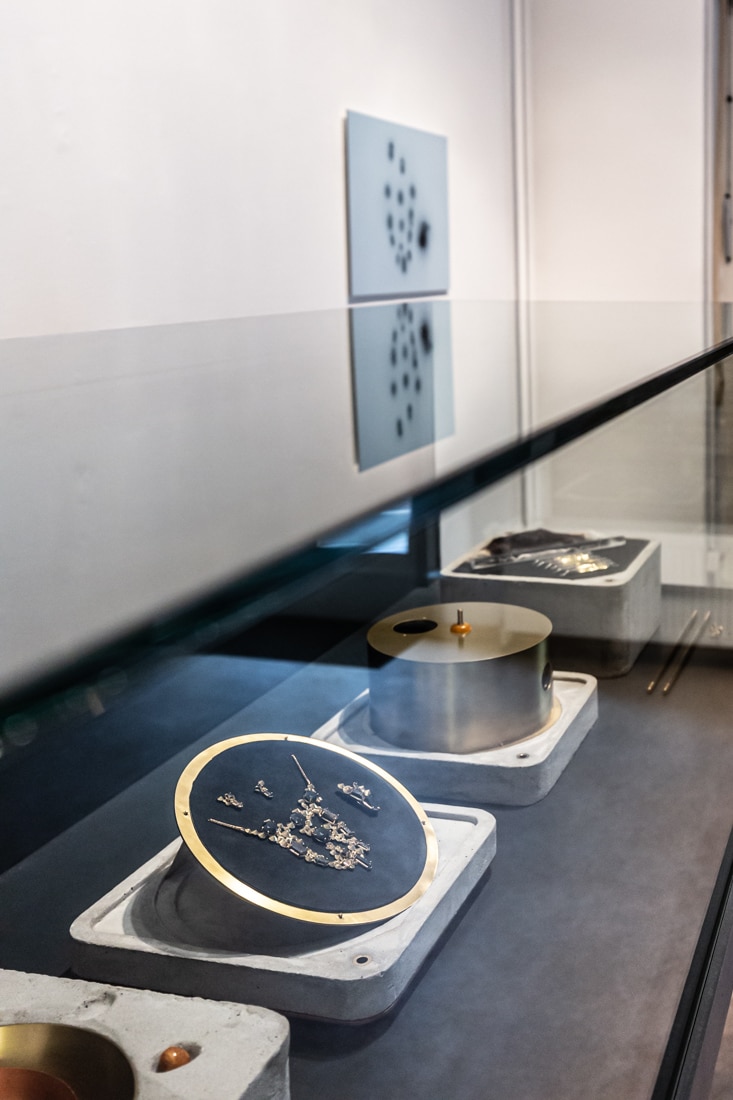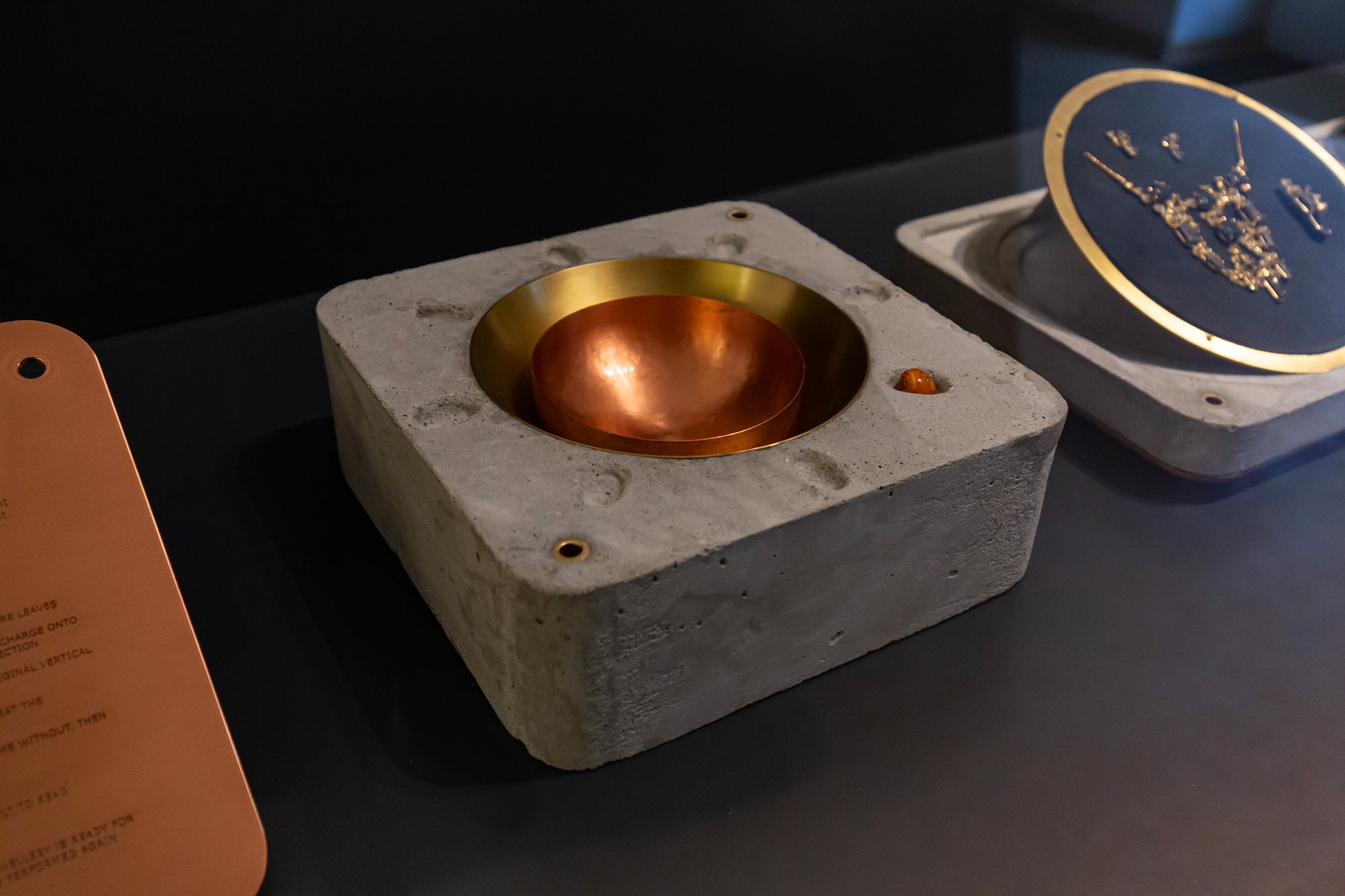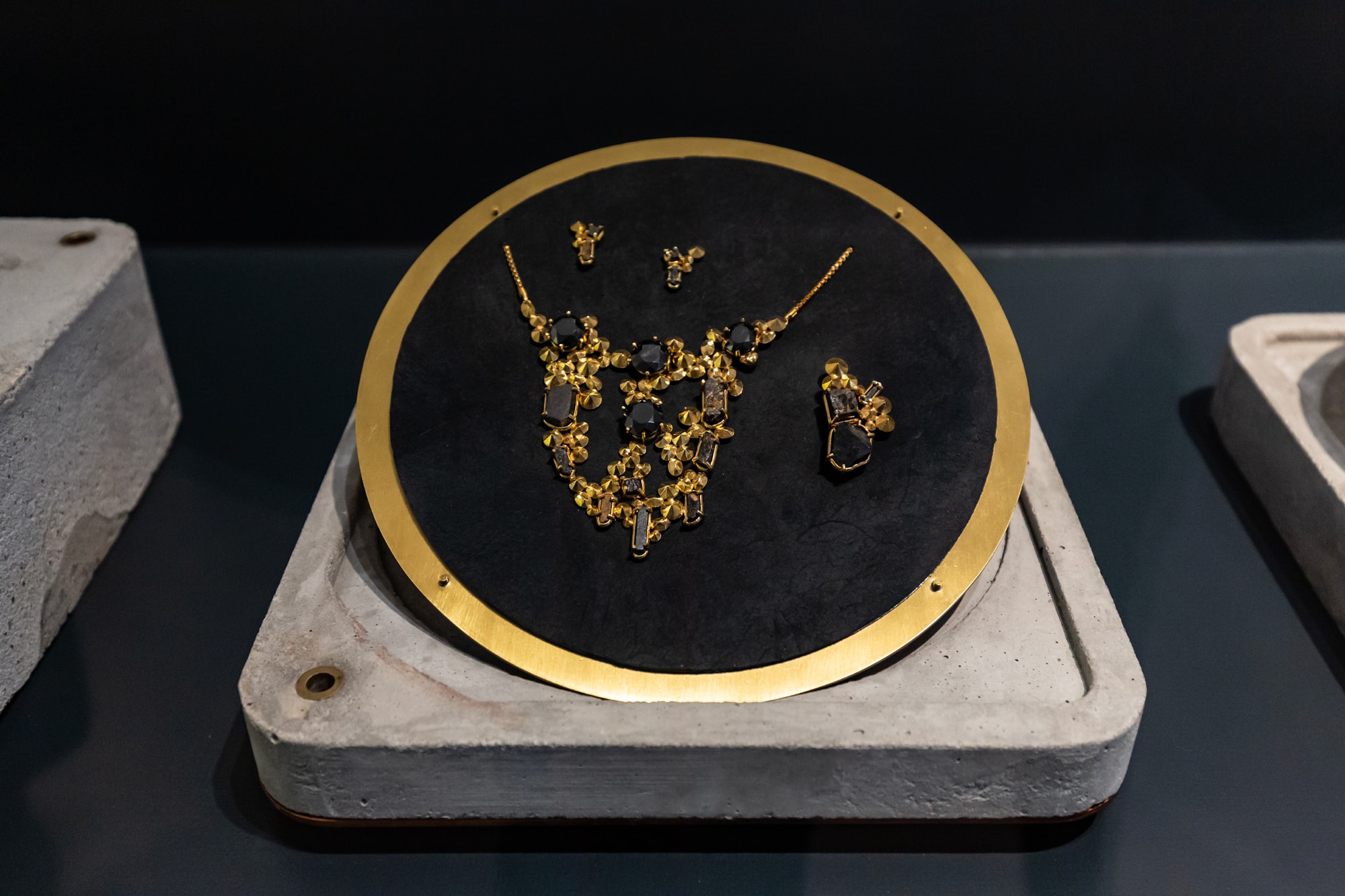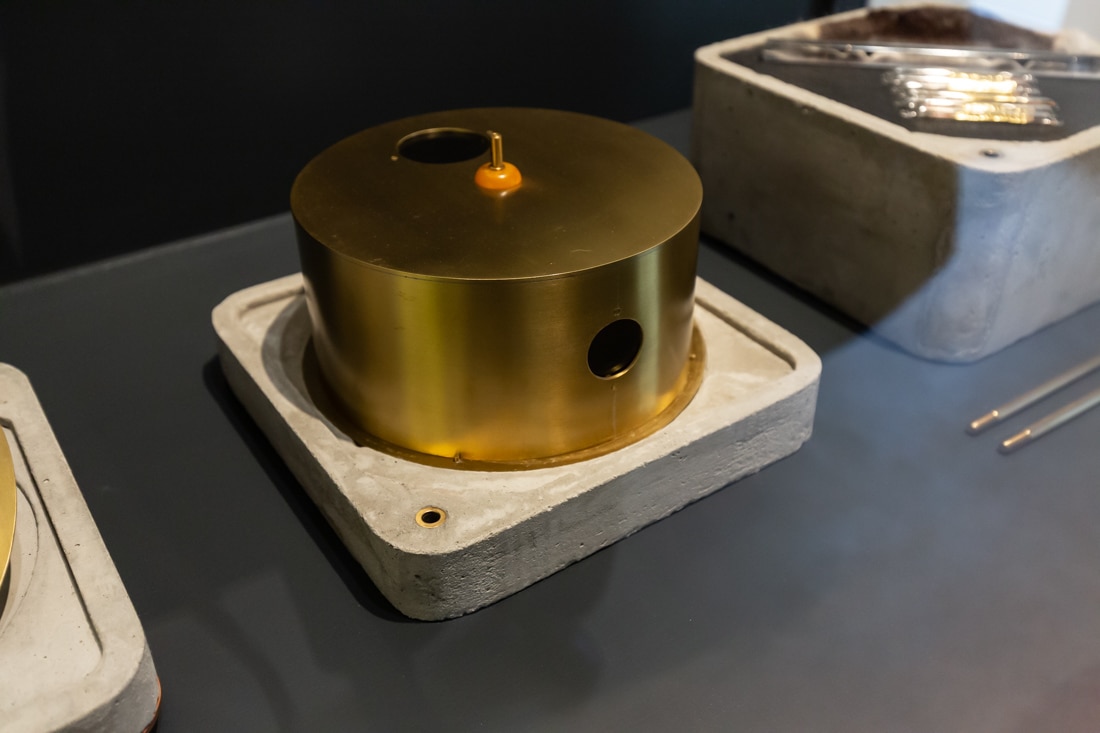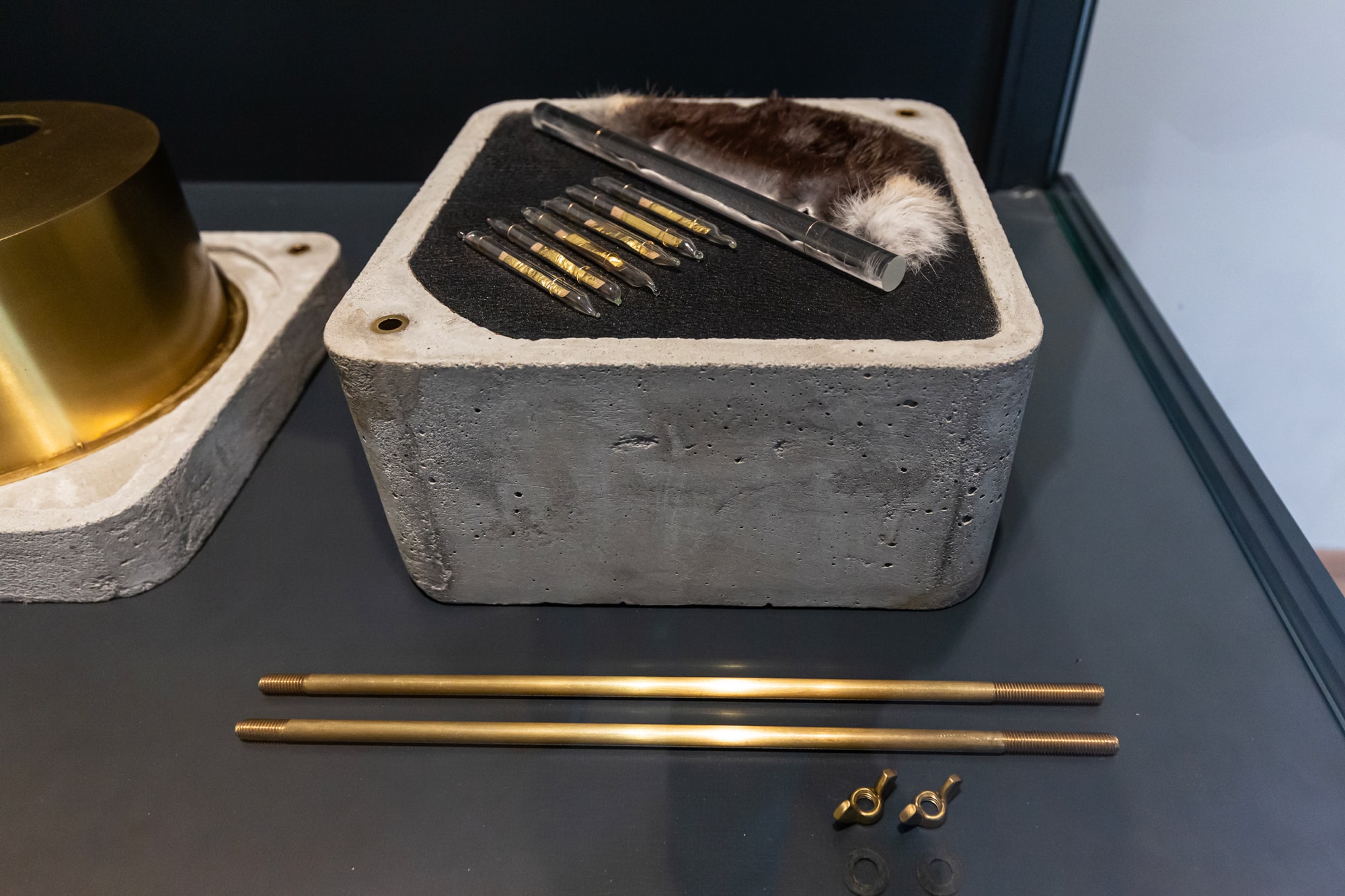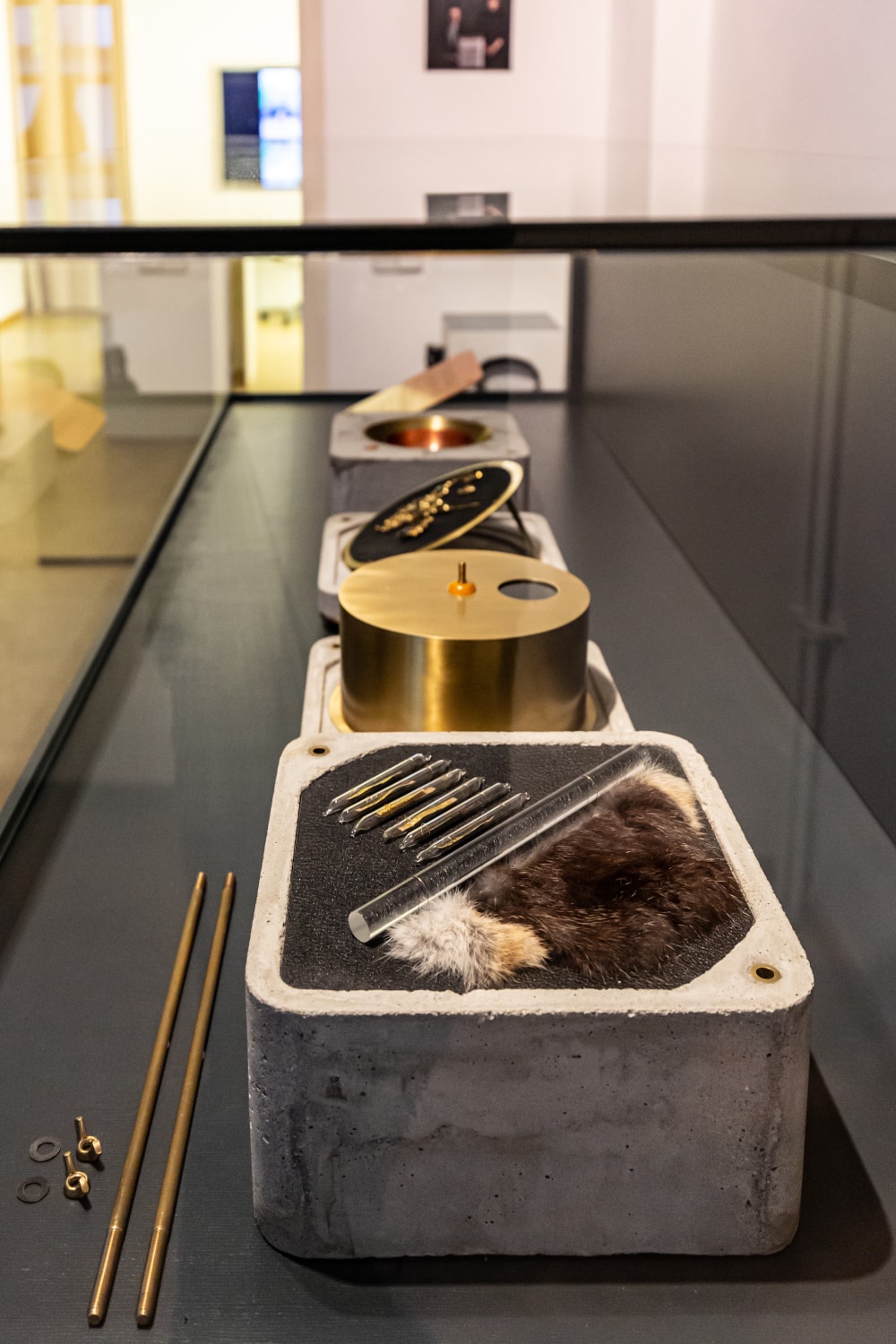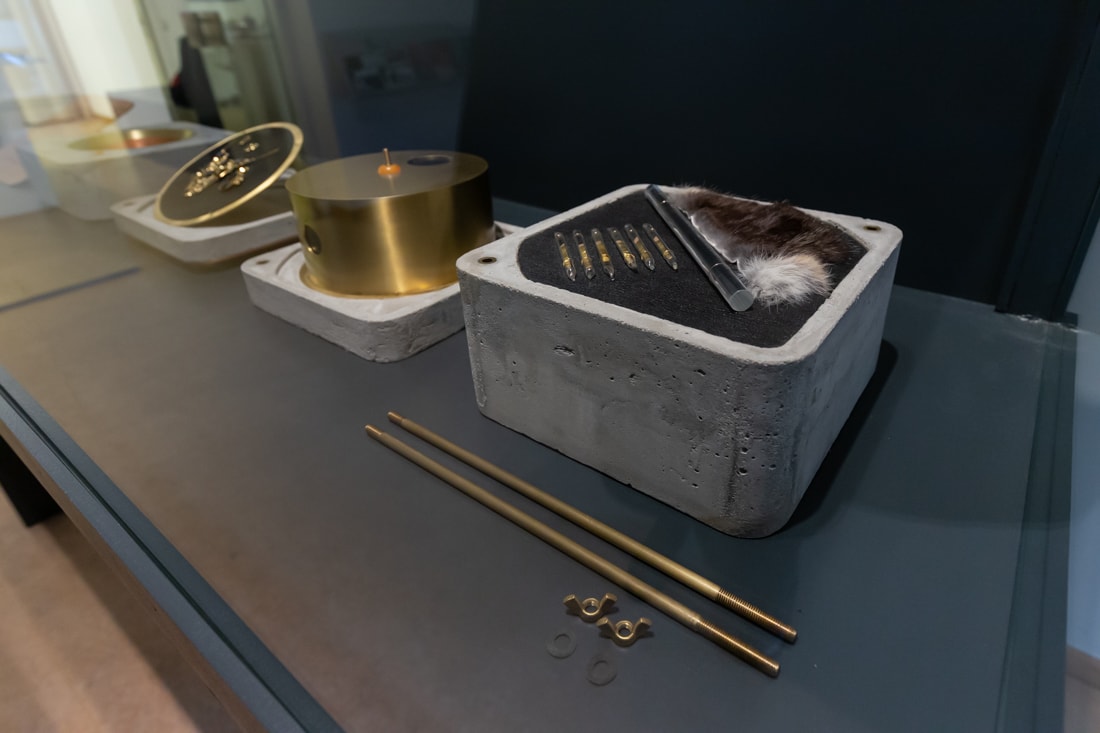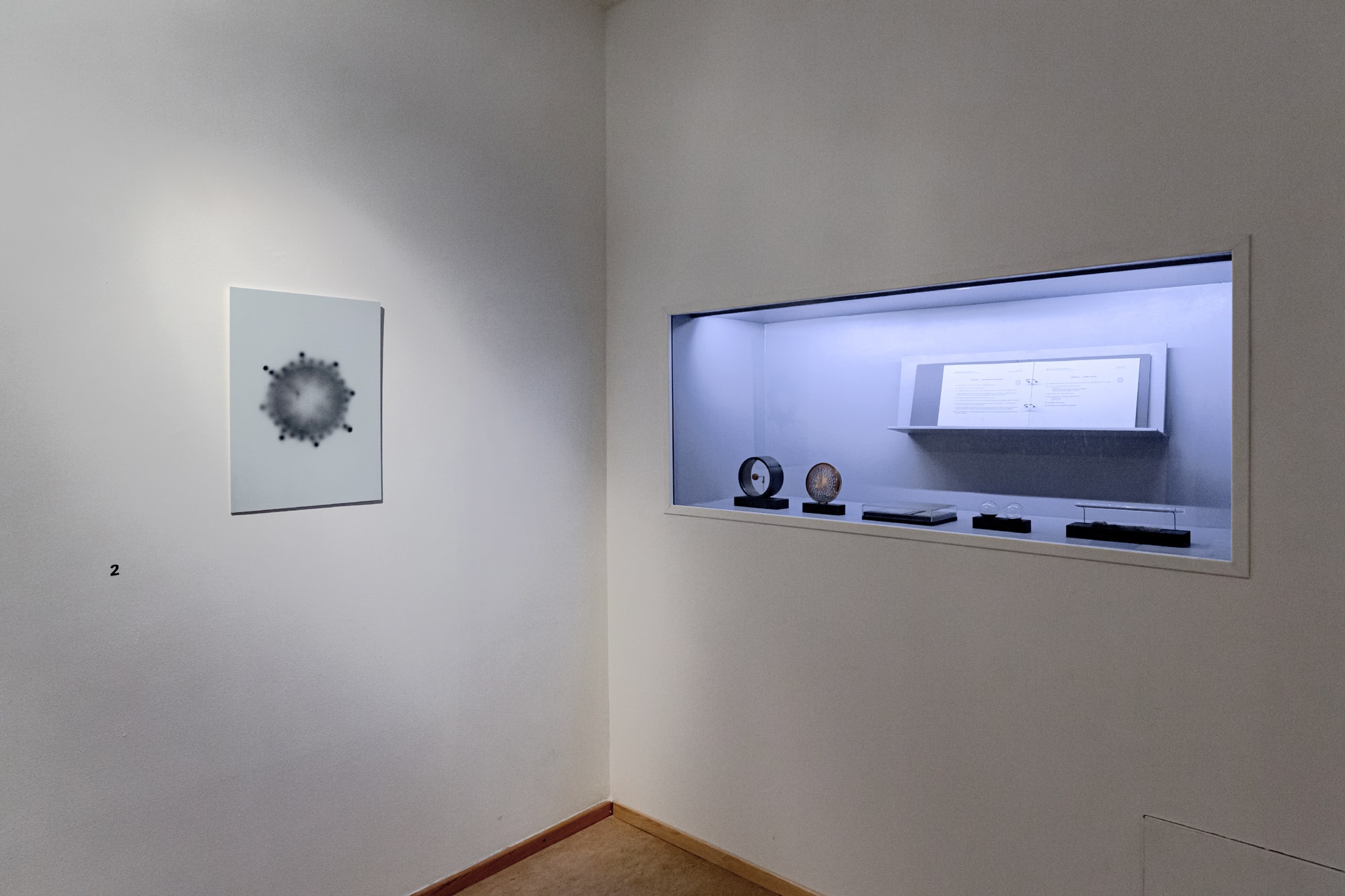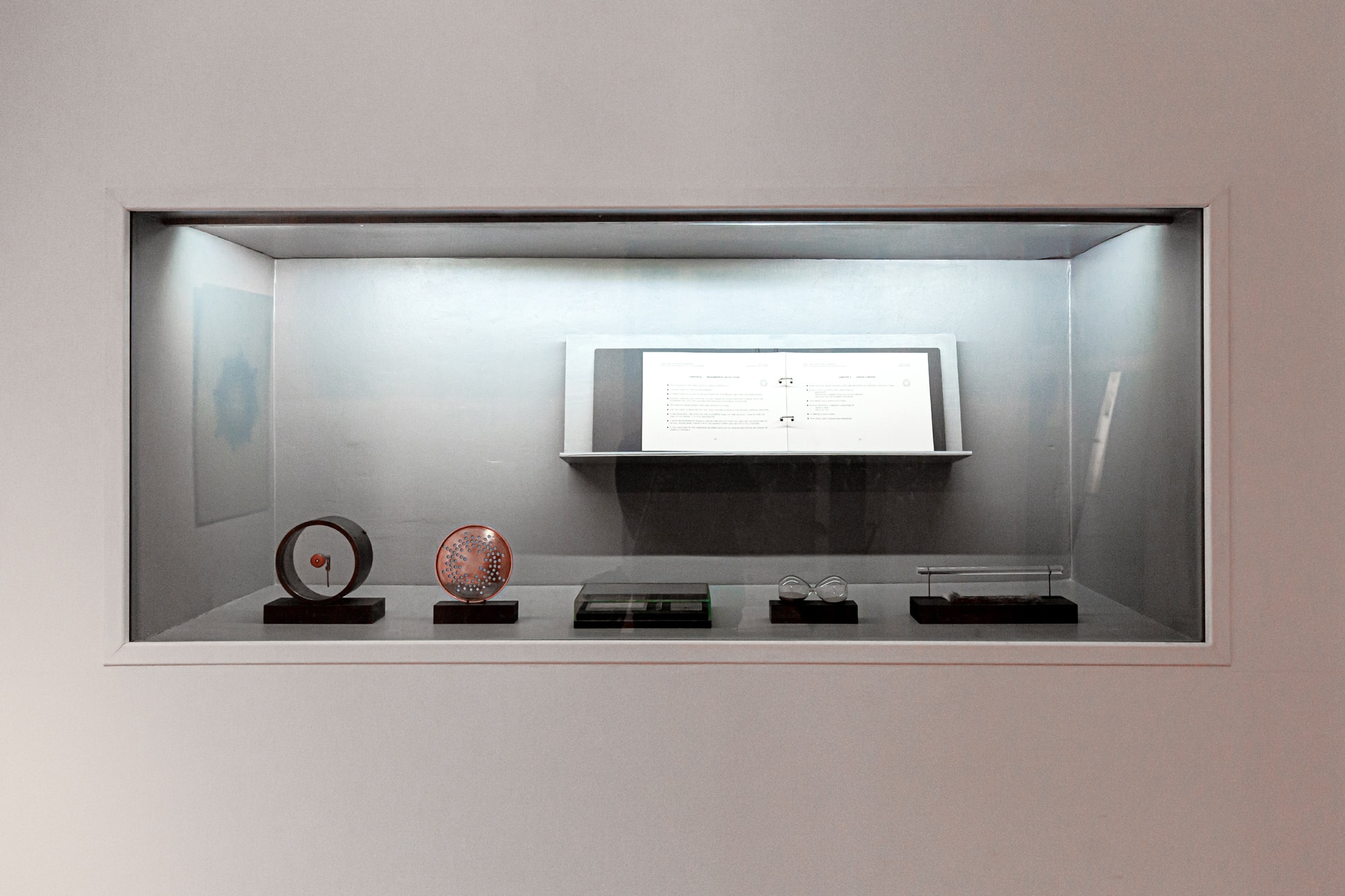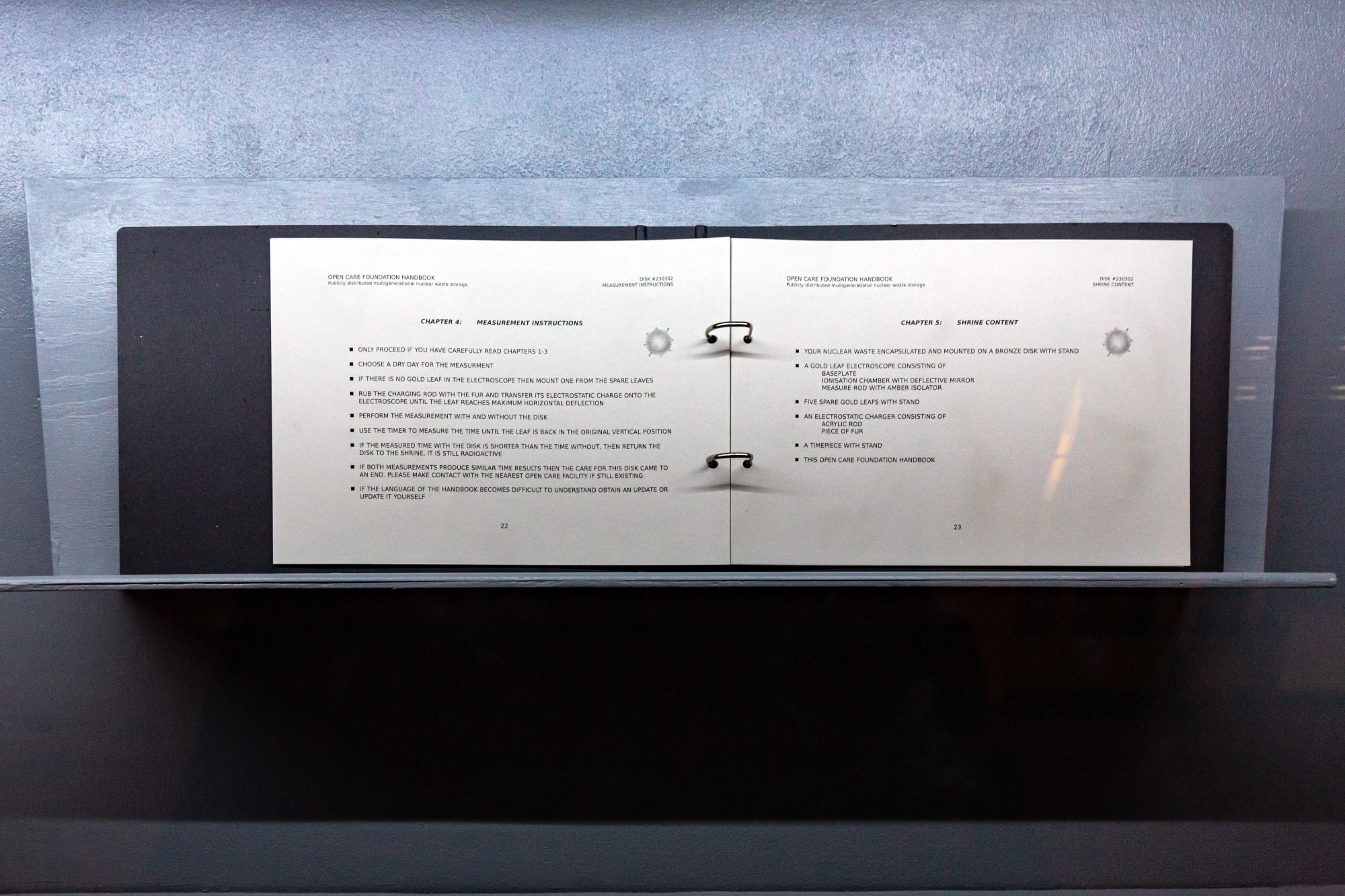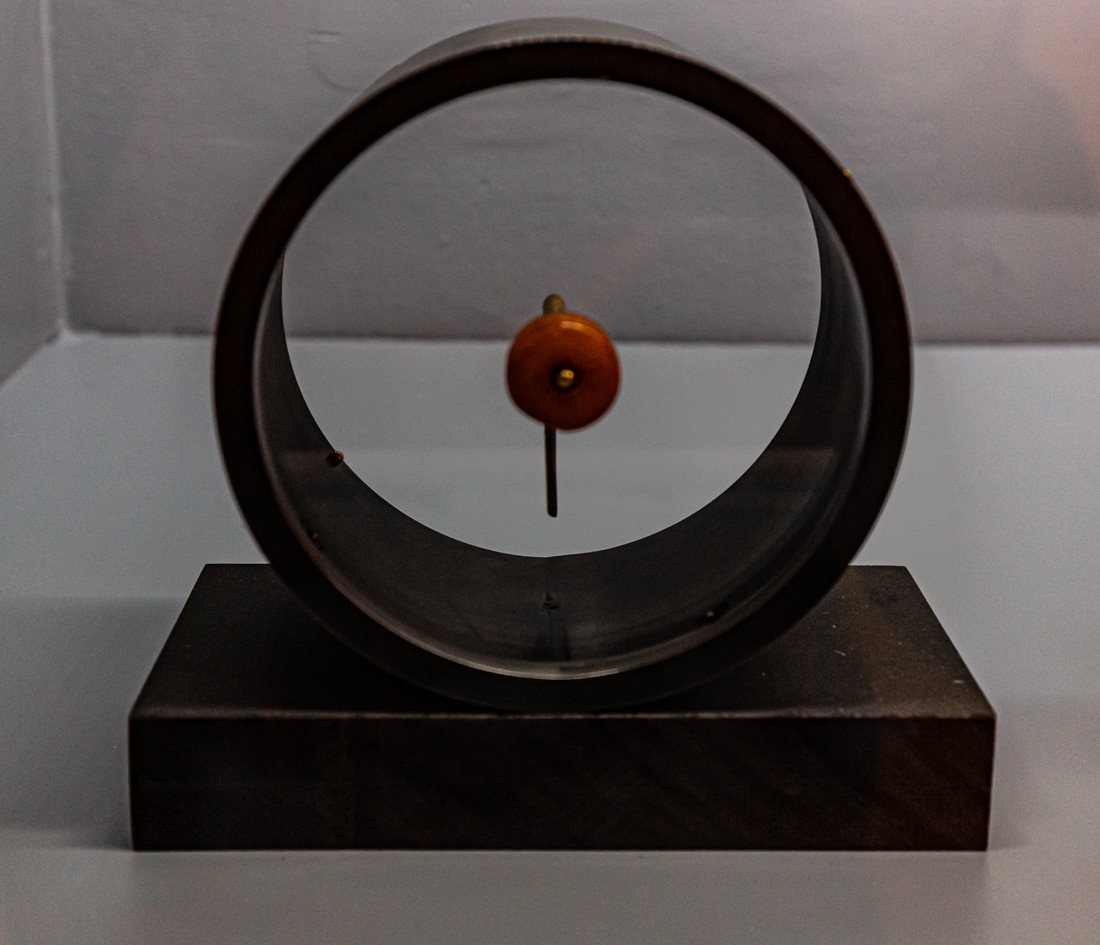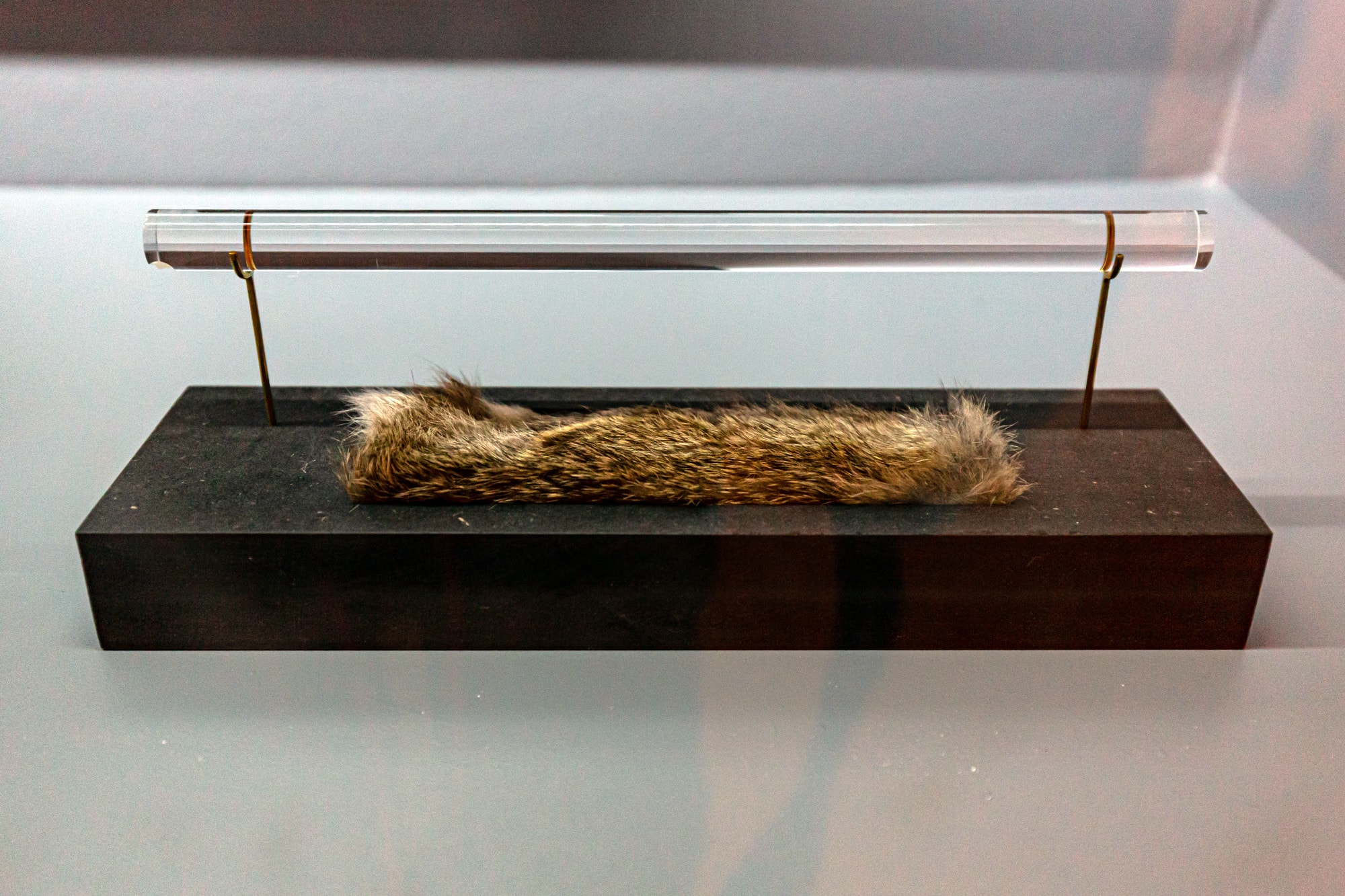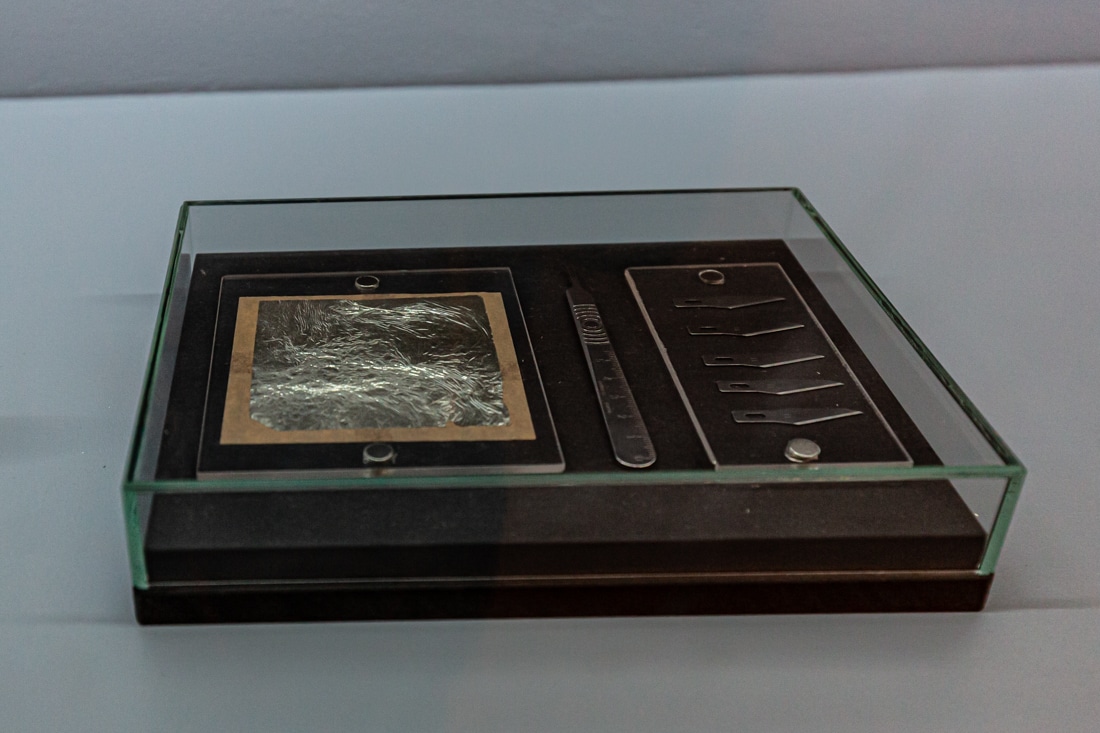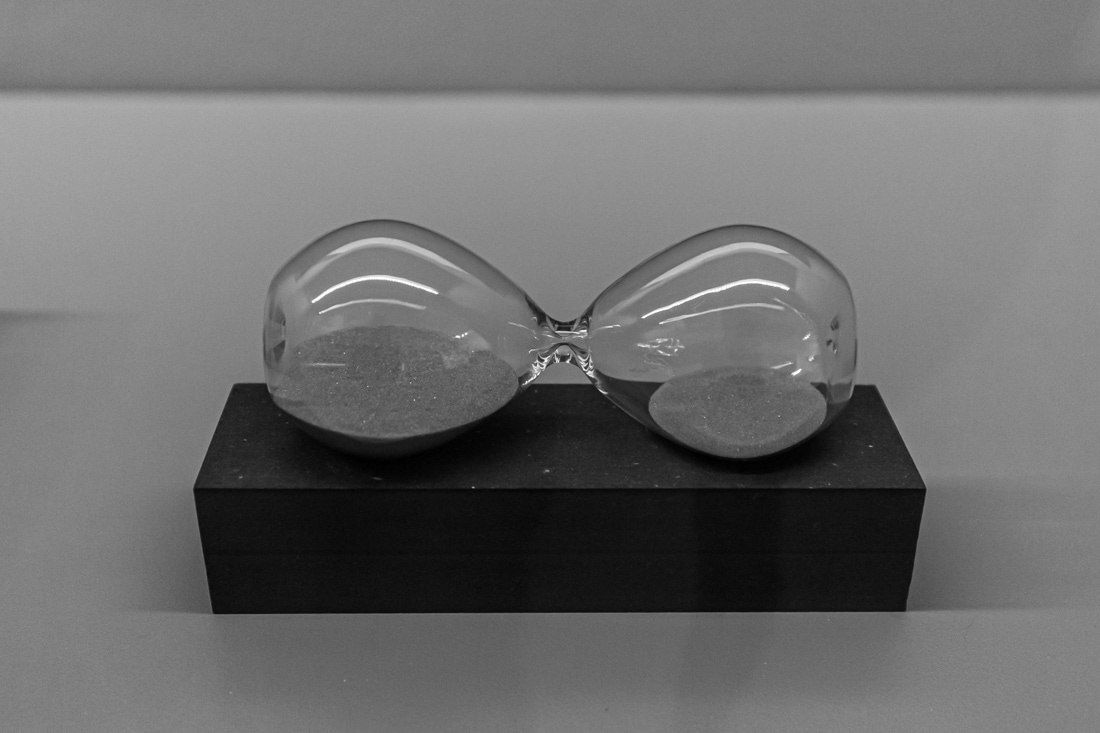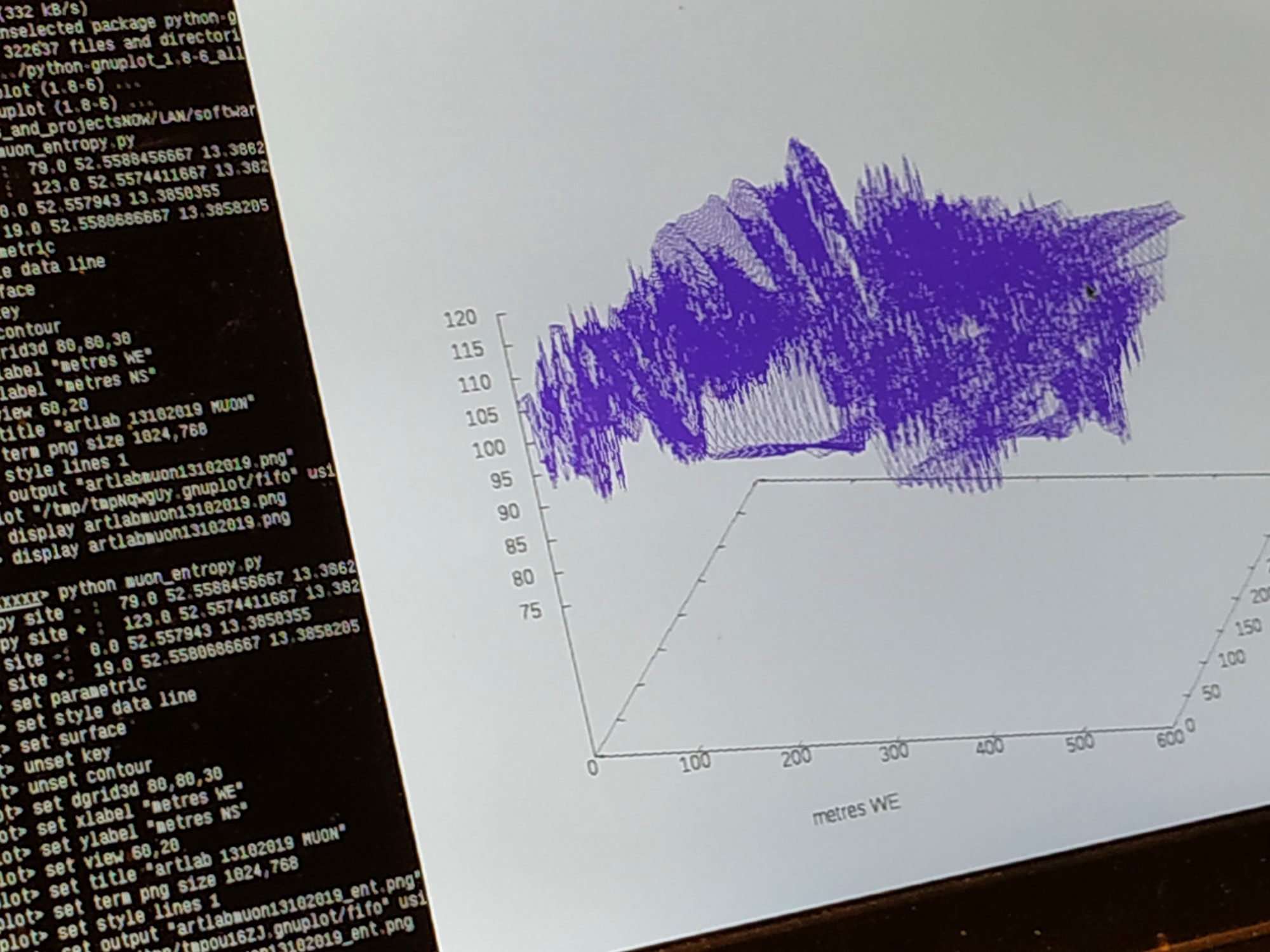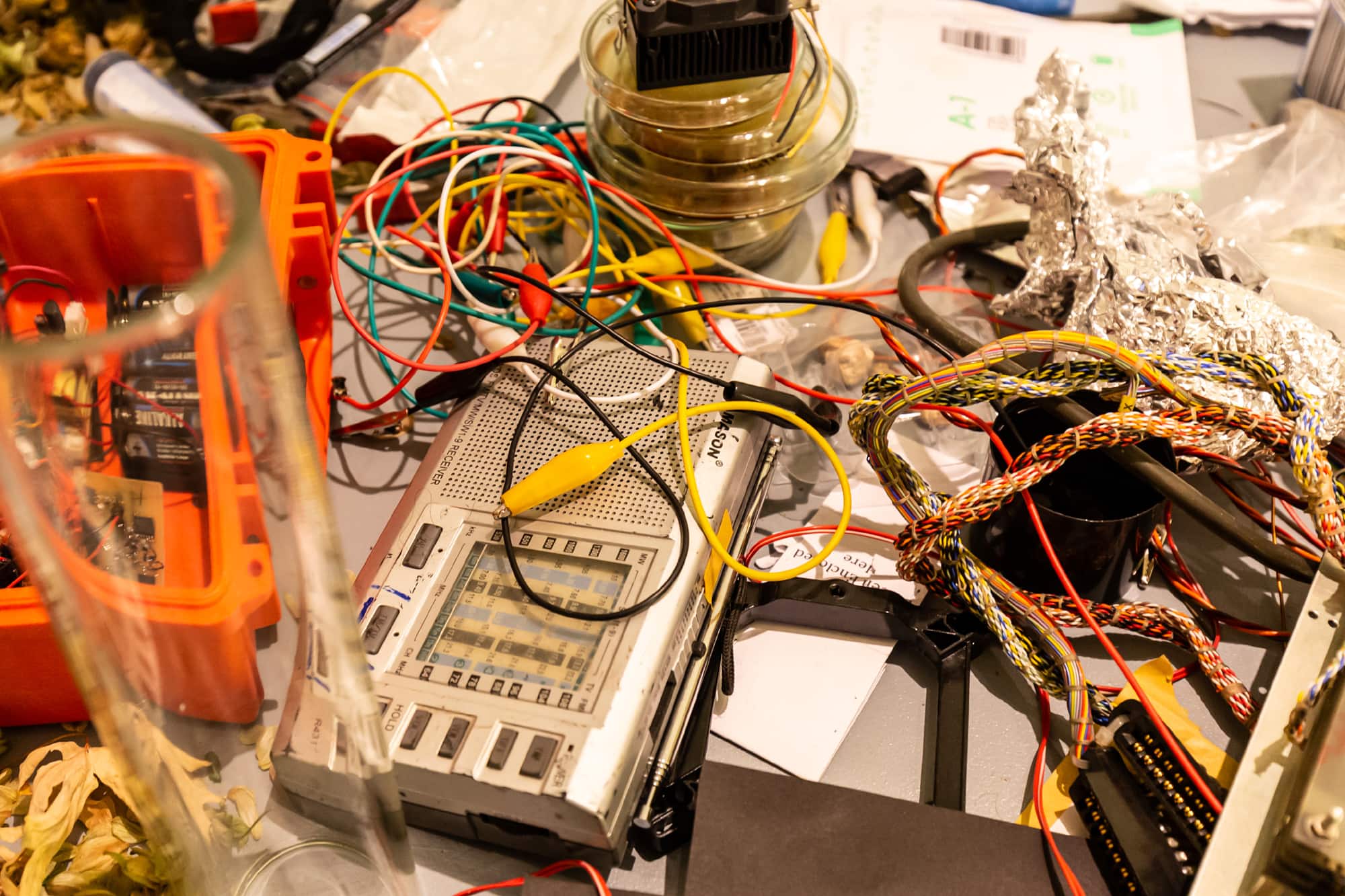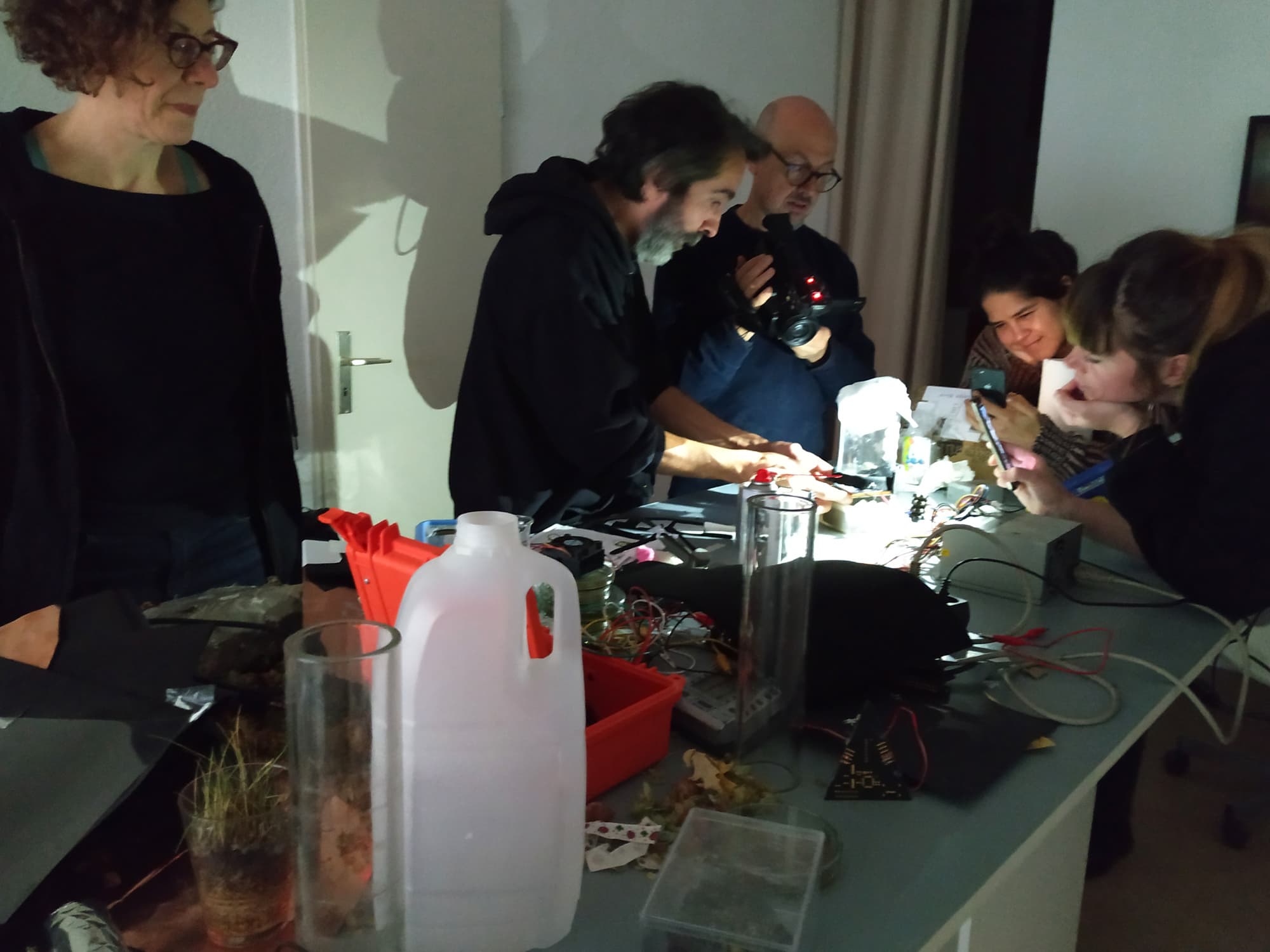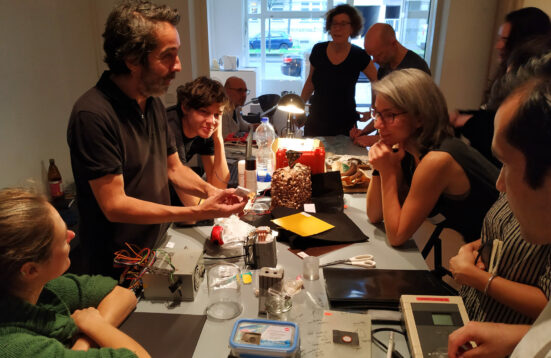Invisible Forces
Artistic Research
Erich Berger | Mari Keto | Martin Howse
Our planet is not only made up of earth and rocks, but also of a number of invisible forces that influence and shape the form and viability of life. Radiation is not just a by-product of the atomic age, but something that exists in the background of almost every environment. The exhibition wants to open a dialogue between contemporary culture, deep time and psycho-geophysics.
The works by Erich Berger and Mari Keto examine the questions of radioactive waste in our world today. The installation Inheritance in the front room proposes a future where a stunning set of jewellery has become a precious, but potentially deadly heirloom. The work was partially made of radioactive Thorianite (ThO2), Thorite (Th, U) and Uraninite (UO2), which will eventually decay into a nonradioactive isotope of lead. A set of objects are laid out in a display case: instructions engraved in copper; two bowls that form a water clock; the jewellery; ; an electroscope; and finally an acrylic rod and piece of fur to create an electrostatic charge and some gold leaves. For Inheritance also consists of a ritual where the heirs remove the jewellery from its concrete container and use an electroscope to test whether the pieces are safe to wear or must be stored for the next generation. The narrative engages the topic of “deep time” in a manner that reflects the brevity of human presence on the planet, as well as questioning our “atomic legacy”. What Berger and Keto present us here is the moment before the ritual, where the heirloom is ready to be tested. The photograph next to the vitrine is an autoradiography, made by placing the jewellery on film; the radioactivity of the gemstones works like light creating a negative image.
“Nuclear power and nuclear waste are highly controversial topics. Many think that as individuals and society we do not have enough information to be able to make informed decisions about the use of nuclear technology” comment Berger and Keto. “Because the economical, environmental and chronological dimensions are difficult to comprehend in their extensiveness, the discussions are lead very dogmatic and emotional. Inheritance attempts to address the long time component of nuclear waste by transferring it into the intimate and caring concept of a family without compromising the deep time aspect.”
Their other work in the exhibition, Open Care in the front room to the left proposes a speculative scenario and a future where individual families take responsibility for radioactive waste. The shrine offers an electroscope for measuring radioactivity, an electrostatic charger and a storage disc for a small amount of nuclear waste, to be passed down from generation to generation. The waste produced by our scientific and technological advances here becomes a multi-generational burden of collective care and responsibility. Next to the shrine we can again encounter an autoradiography with 92 pellets of the anthropogenic isotope 241Am.
In Open Care, Berger and Keto have arranged the objects intentionally as a shrine, which could be installed in a family apartment or house. In a possible future, care for mankind’s toxic past (our present) becomes a ritualised task for future generations. Both Inheritance and Open Care present scenarios for a deep time responsibility of our species to deal with waste.
In the back room Martin Howse shows objects, machines and visualization of his workshop and forensic exhibition Local Area Network (LAN). It is a trans-disciplinary, speculative investigation of local fields and particles, and energetic exchange that proposes a hacking of local networks on geological, environmental and technological “Umwelten”. Howse’s work involves active forms of collaborative work to explore the meeting points of code, geology and the human psyche (psychogeophysics).
An orange case on the table measures entropy (as a measure of randomness and dis/order) and the incidence of muons, which are created by the collision of cosmic rays in the atmosphere. During the workshop this device was carried through the area around ALB. Entropy and muons were mapped to location using GPS. The results can be seen in two large prints on the wall. In one print, entropy is centred around 100 as we simulate 200 coin tosses – the median would be 100 heads (or tails). The other print plots the number of muons encountered within 4 seconds. A cardboard box, also carried through the local area during the workshop, measures the intensity of radio frequency energy (100 MHz to 4 GHz), which is then mapped to location so we can see which areas have more intense electromagnetic fields and waves.
During the first workshop day participants also built a cloud chamber, which enables the viewing of muons – here as paths of incident ionising radiation – caused by cosmic ray interactions, or particles from decay events (from the radioactive minerals). The chamber is saturated with alcohol, the bottom of the chamber is then cooled, so it forms a vapour, and the particles interact with the vapour, condensing around it, forming visible trails.
As both a two-day workshop and a forensic exhibition, LAN examines and identifies sites and places where energetic transformations intersect with human infrastructure and agents of abstraction and logic. Howse sees LAN as an intervention “with the co-existent realms of algorithmic entities, of the structures and infrastructures of computation with the non-human entities of the earth (mycelium and microbes).”
Regine Rapp & Christian de Lutz

